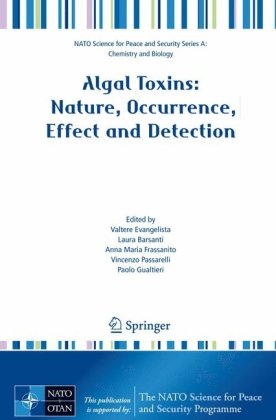

Most ebook files are in PDF format, so you can easily read them using various software such as Foxit Reader or directly on the Google Chrome browser.
Some ebook files are released by publishers in other formats such as .awz, .mobi, .epub, .fb2, etc. You may need to install specific software to read these formats on mobile/PC, such as Calibre.
Please read the tutorial at this link: https://ebookbell.com/faq
We offer FREE conversion to the popular formats you request; however, this may take some time. Therefore, right after payment, please email us, and we will try to provide the service as quickly as possible.
For some exceptional file formats or broken links (if any), please refrain from opening any disputes. Instead, email us first, and we will try to assist within a maximum of 6 hours.
EbookBell Team

4.0
46 reviewsThis volume contains the lectures and seminars given at the NATO Advanced Study Institute on “Sensor Systems for Biological Threats: The Algal Toxins Case”, held in Pisa, Italy in October, 2007. This ASI offered updated information on how far the research on algal toxins has gone in the exploration of structures, biosynthesis and regulation of toxins, and the development of technology for bio-monitoring these compounds.
The first part of the book deals with a general overview of the toxins and toxicity related to the algal world, whereas the second part deals with uses and applications of the different kind of sensors so far developed. The first part includes an introduction on the main algal features written by our group; than, Professor Whitton describes the diversity of the cyanobacteria, the algal division that possesses more toxic species, in relation to the environment; Dr. Zaccaroni gives us an overview on the fresh water and marine algal toxins; Professor Graneli and Doctor Fistarol describe the allelophaty phenomenon, i.e. any influence on the growth and development of natural systems produced by the algae metabolites. The first part ends with the description of toxic algal blooms in several European geographical areas by Dr. Congestri, Dr. Rakko and Dr. Bouza.
The second part of the book deals with the review of sensor organisms, the use of biochemical methods and laser Doppler techniques for toxin determination presented by Professor Parshykova; the use of nucleic acid sensor sensors for identification of toxic species illustrated by Dr. Penna and Dr. Dierks; the use of immunological ELISA analyses combined with various electrochemical detection systems to quantify algal toxins tested by Professor Albertano; a review by Dr. Scozzari on sensors based on electrochemical methods, and a gene-engineered yeast usable as biochemical instrument for toxin assessment by Dr. Gonchar.